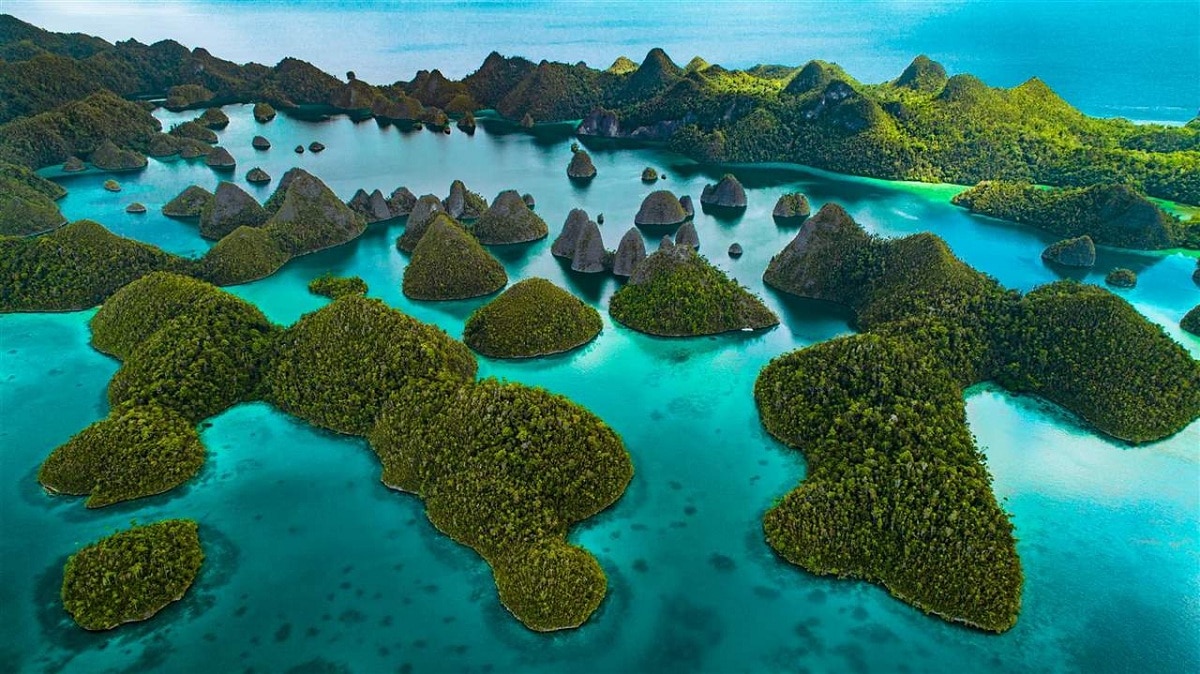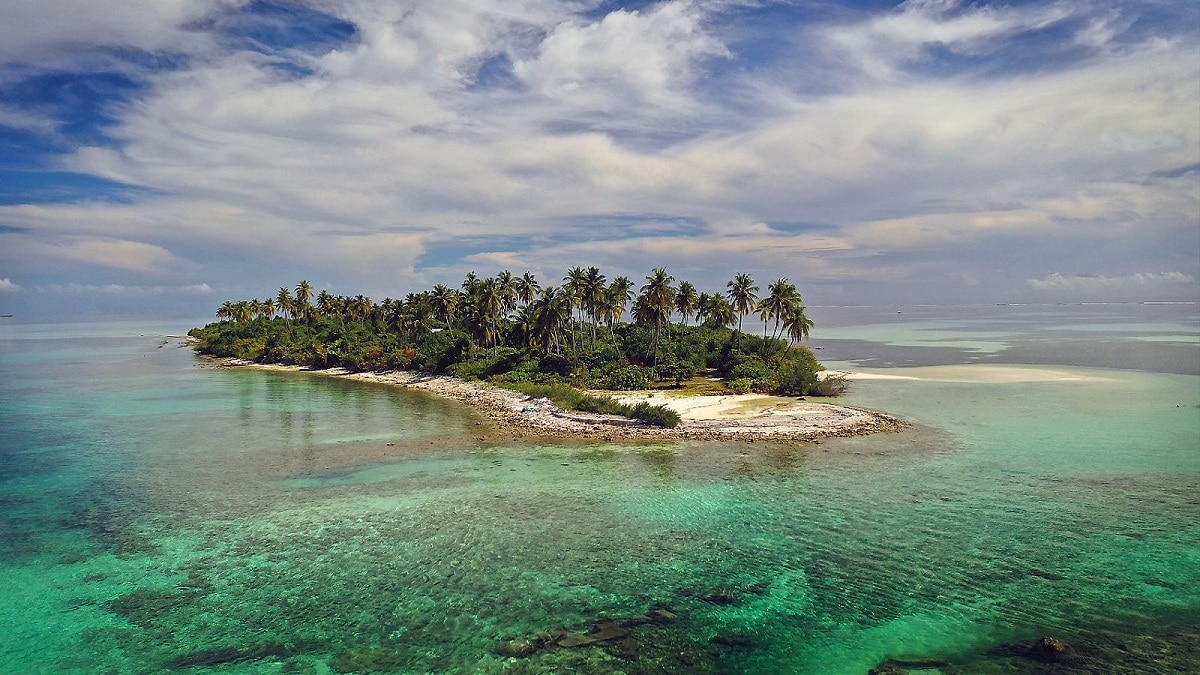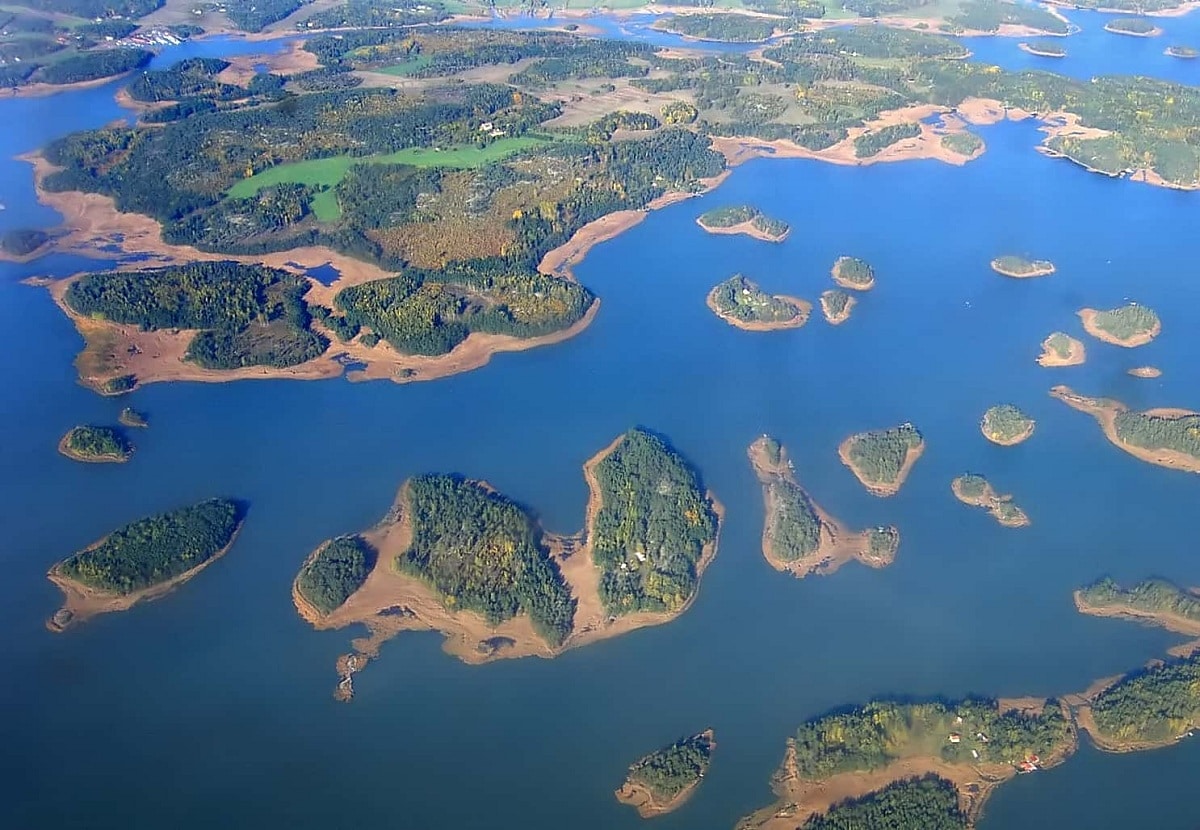
On our planet there are various geological formations that have unique characteristics depending on their origin, morphology, type of soil, etc. One of them is the archipelago. Many people don't know what is an archipelago and how it is formed.
For this reason, we are going to dedicate this article to telling you everything you need to know about what an archipelago is, how it is formed and what its main characteristics are.
What is an archipelago

geographically, The group of islands that are grouped in a relatively small part of the ocean is called an archipelago. that is, not very far from each other, although they are usually quite numerous. In addition to the islands themselves, there may be other types of islets, cays, and reefs in the archipelago.
The word archipelago comes from the Greek words archi ("over") and pélagos ("sea"). This is the term that classical antiquity used to refer to the Aegean Sea ("Shanghai" or "Main Sea") because it was full of islands. Later, it was used to refer to the islands of the Aegean Sea, and later to the group of islands similar to them.
There are many archipelagos in the world, but most are concentrated in Southeast Asia and between the northeast coast of the United States and Greenland.
Key features

The main characteristics of the archipelago are the following:
- They can arise or originate from tectonic movements, erosion and deposition.
- They are groups of islands located in the sea with relatively short distances from each other.
- In ancient times, the word archipelago was used to name the Aegean Sea.
- The islands that make up the archipelago share a common geological origin.
- They are characterized by high temperatures and trade winds that blow from the northeast.
- Its rainy season usually starts in May and lasts until December.
- They record about 80% of the annual rainfall.
- Due to their geographical location, they can be affected by hurricanes.
- Those found in the tropics of the Earth are used as tourist destinations because their beaches are exotic and small.
- Islands like Japan are huge archipelagos that arose as a result of volcanic eruptions.
Why do islands form?
The islands are the product of different geological processes, that is, changes in the earth's crust over time. Just as continents were formed, different types of islands were also formed. In this sense, we can talk about:
- continental islands of the same origin as the rest of the continent are actually joined to it by the continental shelf, although they are separated at the surface by shallow masses of water (no more than 200 meters deep). Many of these were part of the continent itself in the past, when the sea level was low.
- volcanic islands, they are the result of submarine volcanism, the deposition of subsurface materials on the surface, where they cool and become solid soil. They are the newest type of all the islands.
- hybrid islands, where seismic or volcanic activity combines with the continental plate itself, it produces a combination of the first two scenarios.
- coral islands, Generally flat and low, they are formed by the accumulation of coralline material on shallow underwater platforms (often of the volcanic type).
- sedimentary islands, the result of the accumulation of sediments, are generally located at the mouths of large rivers and transport large amounts of sand, gravel, mud and other substances that compact and solidify over time. They usually form a delta at the mouth of the river.
- river islands, formed in the middle of a river as a result of changes in the course or course of the river, these islands allow the appearance of solid ridges, rest areas or flooded marshy depressions.
types of archipelagos

Similarly, archipelagos are classified according to their geological origin, but in this case only two categories are distinguished:
- oceanic archipelagos, formed by islands generally of volcanic origin, they do not belong to any continental plate.
- mainland Archipelago, formed by continental islands, that is, islands that are part of a continental plate, even if they are separated by shallow expanses of water.
examples of archipelagos
Here are examples of archipelagos in different parts of the world:
- the islands of hawaii they are located in the North Pacific Ocean and belong to the US. They are made up of nine islands and atolls, the largest of which is the island of Hawaii. It is the most isolated archipelago on Earth.
- Iases They belong to Ecuador and are located 1.000 kilometers from the Pacific Ocean coast. It is made up of 13 volcanic islands and another 107 small islands in which the second most important marine protected area in the world is located, declared a World Heritage Site by UNESCO in 1978.
- Canary Islands: Located on the northwest coast of Africa and politically belonging to Spain, the Canary Islands are made up of eight islands, five islets and eight rocks. It is a group of volcanic islands located on the African continental plate and is part of the Macaronesian natural space.
- The Chiloé Archipelago It is located in the south of Chile and consists of a large island (Isla Grande de Chiloé) and several smaller islands that are distributed around the largest island, with three and four each. This archipelago corresponds to the foothills of the Chilean Coastal Range, and all but the peaks are submerged.
- The Los Roques Islands they belong to Venezuela and are located in the Atlantic Ocean, 176 kilometers from the capital, it is the largest coral reef in the Caribbean Sea. It has an unusual atoll shape, most commonly found in the Pacific Ocean, and consists of some 42 reef islands with inland lagoons and 1.500 kilometers of coral reefs.
- the malay archipelago, also known as Insulindia, is an insular region of Southeast Asia, located between the Indian Ocean and the Pacific Ocean, comprising all or part of the territories of seven countries: Brunei, Philippines, Indonesia, Malaysia, Papua New Guinea, Singapore and Timor. East. There are more than 25.000 different islands, divided into three groups: the Sunda Islands, the Moluccas and the Philippine Islands.
I hope that with this information you can learn more about what an archipelago is, its characteristics and formation.